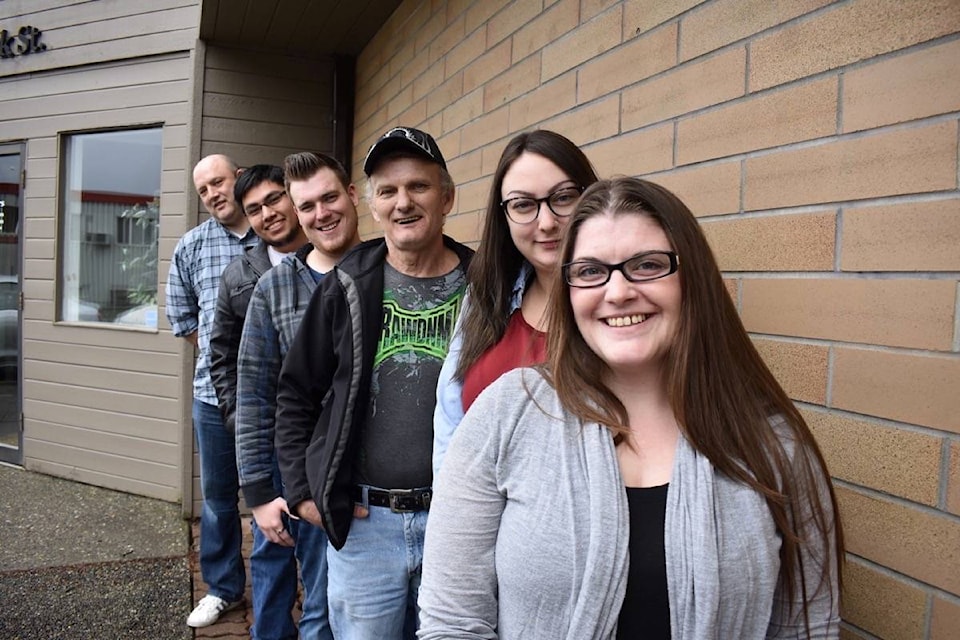The community needs to have an uncomfortable conversation about how to address homelessness, the executive director of Hope’s homeless serving organization says.
“There’s sort of this community mindset…homelessness is a HATS problem, when in fact homelessness really is a community issue,” Gerry Dyble, executive director of the Hope and Area Transition Society, said at Tuesday’s meeting of the Hope and area healthy communities committee.
Last week a meeting was held between community partners, a first step in coordinating a response to Hope homelessness. HATS is also changing the way the organization addresses homelessness, from a focus on the Thunderbird Motel project to homelessness in the community.
“We have to do something different because homelessness is escalating as we go along,” Dyble said. The amount of homeless individuals surveyed has increased from 21 in 2004 to 36 in 2017, and even these numbers are low compared to the reality Dyble said. Many more families and youth are now homeless as well.
Dyble spoke of individuals who are falling through the cracks. They may be going through severe mental health challenges coupled with addictions, which prevent them from securing emergency shelter or more permanent housing.
A scene with one of these individuals played out on Wallace Street Wednesday, an onlooker from Nova Scotia explained.
“He was wearing kind of a pink or red type of, I don’t know if it was a towel on the top part of him, and the rest of him was just completely nude,” said Dean Shandal, of a man he saw Wednesday morning outside of the New2Yew thrift store.
Shandal is a former resident of the Lower Mainland and has been a volunteer with Citizens on Patrol in Chilliwack and New Westminster, but he said he has never seen anything like this.
Not knowing where to turn, Shandal called the RCMP. A bylaw officer, police and ambulance eventually intervened and the individual was taken away in the ambulance.
“I happened to talk to one guy on the street and he says ‘oh yeah, he’s been a common person around town and all the businesses want to do something about it but they can’t’,” he said. “About three or four days ago I saw him laying in the back alley.”
Dyble stressed the issue of homelessness is a complex one and needs to have a community response.
“(HATS doesn’t) have the magic bullet, nor does police, nor does mental health, nobody has the magic bullet to address this situation. So I think that we need to be focused on our intent on how we want to strategize around this and come together,” she said.
Coordination needs to happen between the groups offering assistance to street-involved people. How that coordination will look is still to be decided, but Dyble suggested housing the collaboration underneath the healthy communities committee.
“It is uncomfortable, it makes us uncomfortable,” she said about the conversation the community needs to have. “We need to sit in it as a community and say what are we going to do? And rally around it.”
HATS is also shifting the focus of their homeless program, to reach the people living along rivers, under bridges and in the forest, as well as making connections with land- and motel owners.
“These are the hardest to house individuals in our community, and who wants to rent a room to them? Nobody,” Dyble said. “So it’s building relationships with landowners and motel owners, it’s doing our best.”
Doing their best could be giving an individual a tent so they can stay warm outside. This is the reality, Dyble said, as some individuals are very difficult to house. One client at HATS was housed for a mere week until they were evicted this week, she added.
They will also be looking at successful models in other communities, such as Raven’s Moon in Abbotsford where people live communally in houses the organization rents from homeowners.
To accomplish this shift, Dyble has assembled a new team: community homeless outreach workers Jessica Wilson and Ray Hartt; emergency shelter workers Madison Pelletier and Kodie Krenz; Thunderbird Motel project support staff Brian Lambright; and aboriginal community homeless outreach support worker Kelsey John.
Each will have around 15 to 20 clients and 15 additional indirect clients. They will see clients in the community, at the Thunderbird Motel and those who come into their Park Street office.
“We’re going to continue to give them support, advocacy and referrals,” Dyble said of the 30 Thunderbird residents and those staying in the four emergency shelter beds. “We’re going to be spending dedicated time out at the Thunderbird, supporting services out there. We’re going to be spending time in the community, because there’s individuals in the community who are homeless, who don’t come out to the Thunderbird.”
HATS receives $263,719 in funding each year from BC Housing; 60 per cent goes to wages for four staff, 30 per cent goes to operating and program costs and 10 per cent to administration. Through grants the organization has been able to get an additional $114,195.
The organization also provides domestic violence services, including a transition house in Hope, youth programs and addictions programs for adults and young people.
Is there more to this story?
emelie.peacock@hopestandard.com
Like us on Facebook and follow us on Twitter
